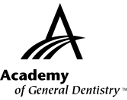|
Exercise No. 372
Subject Code: 011
Cariology
The 15 questions for this exercise are based on the article, Remineralizing agents: effects on acid-softened enamel, on pages 73-76. This exercise was developed by Riki Gottlieb, DMD, MS, FAGD, in association with the General Dentistry Self-Instruction committee.
|
Reading the article and successfully completing this exercise will enable you to:
- describe the effects of 4 dentifrices on acid-softened enamel;
- understand the mechanism of action of remineralizing agents; and
- learn which dentifrices can decrease or prevent the progression of erosive lesions.
|

